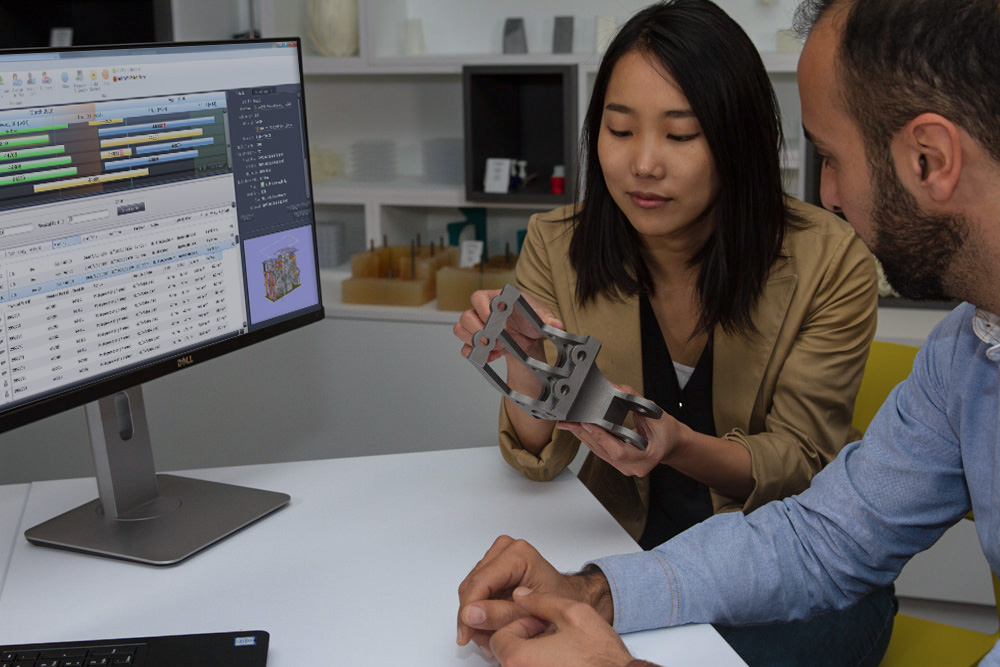Belgian 3D printing service provider Materialise has acquired an option to buy fellow software developer Link3D, which it’s expected to exercise by the end of 2021.
If the deal goes ahead, it will allow Materialise to progress towards its goal of building a complete cloud-based platform, as well as granting it access to new customers in the North America, Europe and Asia Pacific regions. Although the finances of the agreement haven’t been disclosed, Materialise has confirmed that Link3D will continue to operate independently, should the purchase go ahead.
“By joining forces with Link3D, we expect to be even better positioned to provide our customers with a solution to plan, manage and optimize their AM operations”, said Fried Vancraen, CEO of Materialise. “This agreement exploits the synergy between the two companies, and will help us to remove some of the complexity associated with scaling 3D printing as part of a connected, industrial manufacturing process.”

A synergetic acquisition deal
Given that both Materialise and Link3D market Manufacturing Execution System (MES) software packages, there’s already a fair amount of synergy between the firms. By combining both companies’ offerings, Materialise anticipates that it will be able to better help clients in scaling their 3D printing capabilities across complex supply chains, while achieving “greater operational excellence.”
Materialise also plans to evolve its software suite into a ‘Software as a Service’ (Saas) model, that provides its customers with seamless access to an integrated, customizable cloud-based package. With the firm’s acquisition of Link3D, it therefore stands to broaden its offering to clients in the aerospace, automotive and medical sectors, while taking an important step towards its broader SaaS goal.
However, if and when Materialise does exercise its option to buy Link3D, it intends to manage its subsidiary at arms length, with the existing management team remaining in place. The acquisition deal is also expected to benefit Link3D’s clientele, by providing them with access to Materialise’s Magics software, as well as greater 3D printer connectivity and automated production workflows.
“By teaming up with Materialise, a global pioneer of the 3D printing industry, we expect to be able to offer our combined user base access to a robust and comprehensive manufacturing suite of solutions, enabling them to take additive manufacturing to the next level,” said Vishal Singh, Co-Founder and CTO of Link3D.

Materialise’s step change
Within its current portfolio, Materialise offers a broad suite of build preparation, quality control and production management programs, including its proprietary Streamics MES platform. However, while the company has often built on other areas of its business via acquisitions, it has traditionally sought to develop its own software in-house.
Materialise’s decision to buy a 75% stake in Engimplan, for instance, exclusively expanded on its medical portfolio, while its investment in Ditto last year was focused only on delivering 3D printable eyewear. As a result, the firm’s acquisition strategy represents a potential step change, and could be seen as a response to its recent financials, in which it reported its first-ever full year of revenue decline.
Although the company’s software revenue continued to defy the economic climate and grow into Q2 last year, sales began to falter during H2 2020, leading to a FY 2020 drop of 7%. In this light, Materialise’s move to buy Link3D could allow it to beef up its offering to clients, simultaneously providing them with greater control over their production workflow, and reinforcing its near-term financial recovery.
The ‘ARI’ interactive robot
Aside from its move towards acquiring Link3D, Materialise has also worked closely with service bot designer PAL Robotics, to 3D print parts for its ‘ARI’ social robot. The AI-controlled humanoid, which is able to wave, recognize faces and interact via touchscreen, features lightweight additive manufactured socket and housing components, that have yielded significant cost-per-part savings for its creator.
Initially, the company adopted Materialise’s services to order laser sintered and SLA 3D printed prototypes, and found that the process’ speed allowed it to iterate quickly and creatively. Since then, PAL Robotics has incorporated other technologies like vacuum casting and MJF into its production workflow as well, producing short runs of around fifty 20mm to 1200mm-sized end-use parts at a time.
“We are convinced that robots will have an increasingly important role in our everyday lives.”
Ultimately, 3D printing enabled the company to build four completely different ARI bot prototypes, before launching the final version in 2019. More recently, under the pandemic, demand for clinically-safe social robots has increased dramatically, thus the firm’s engineers now intend to continue additive manufacturing exterior upgrades, in an attempt to better address this emerging market.
“The mission of PAL Robotics is to design robotics that will improve our lives and work,” concluded Tito Favaro, a Product Designer at PAL Robotics. “To do that, we’ll keep developing and improving our robots to meet the needs of society better. We consider additive manufacturing to be a big part of the discovery process, in expanding robotics and its value to society.”
To stay up to date with the latest 3D printing news, don’t forget to subscribe to the 3D Printing Industry newsletter or follow us on Twitter or liking our page on Facebook.
Are you looking for a job in the additive manufacturing industry? Visit 3D Printing Jobs for a selection of roles in the industry.
Featured image shows two people designing a 3D printed part using Materialise’s Streamics software. Photo via Materialise.



